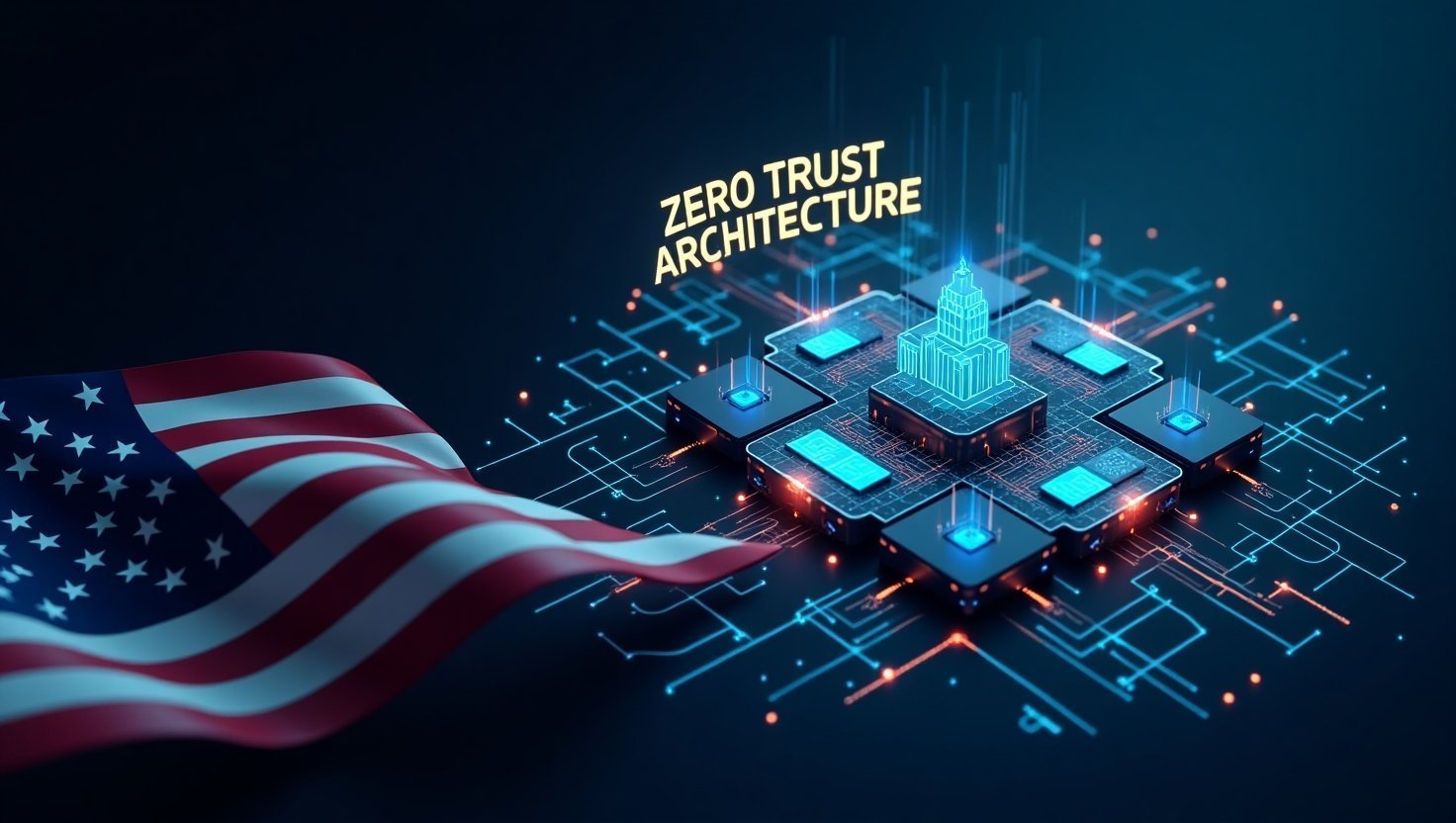In an era where cyber threats are becoming increasingly sophisticated, traditional security models are no longer sufficient to protect sensitive data and systems. Enter Zero Trust Architecture (ZTA)—a revolutionary approach to cybersecurity that is rapidly gaining traction in the USA and beyond. By 2025, Zero Trust is expected to become the backbone of cybersecurity strategies for businesses, governments, and organizations across the country. This article explores what Zero Trust Architecture is, why it’s essential, and how it will shape the future of cybersecurity in the USA.
What is Zero Trust Architecture?
1: The Core Principles of Zero Trust
Zero Trust Architecture is a security model based on the principle of “never trust, always verify.” Unlike traditional perimeter-based security, which assumes that everything inside a network is safe, Zero Trust treats every user, device, and application as a potential threat. Key principles include:
- Least privilege access: Users and devices are granted the minimum level of access necessary to perform their tasks.
- Continuous verification: Every access request is authenticated and authorized in real time.
- Micro-segmentation: Networks are divided into smaller, isolated segments to limit the spread of threats.
2: How Zero Trust Differs from Traditional Security Models
Traditional security models rely on a “castle-and-moat” approach, where the focus is on defending the perimeter. However, this approach has significant limitations:
- It assumes that internal users and devices are trustworthy.
- It fails to address insider threats and compromised credentials.
- It is ineffective against advanced persistent threats (APTs) and lateral movement within networks.
Zero Trust, on the other hand, assumes that threats can come from anywhere—inside or outside the network—and enforces strict access controls at every level.

Why Zero Trust is Essential for Cybersecurity in 2025
1: The Evolving Threat Landscape
Cyberattacks are becoming more frequent, sophisticated, and damaging. Key trends driving the need for Zero Trust include:
- Rise of remote work: The shift to remote and hybrid work models has expanded the attack surface.
- Increased use of cloud services: Cloud environments require a more dynamic and flexible security approach.
- Growth of IoT devices: The proliferation of connected devices introduces new vulnerabilities.
2: Regulatory and Compliance Requirements
Governments and regulatory bodies are increasingly mandating stricter cybersecurity measures. In the USA, initiatives like the Executive Order on Improving the Nation’s Cybersecurity emphasize the adoption of Zero Trust principles. Compliance with regulations such as GDPR, HIPAA, and CCPA also requires robust data protection measures.
3: The Cost of Data Breaches
Data breaches are costly, both financially and reputationally. According to IBM’s Cost of a Data Breach Report 2023, the average cost of a data breach in the USA is $9.48 million. Zero Trust can significantly reduce the risk of breaches by:
- Limiting access to sensitive data.
- Detecting and containing threats more quickly.
- Minimizing the impact of compromised credentials.
Key Components of Zero Trust Architecture
1: Identity and Access Management (IAM)
IAM is a critical component of Zero Trust, ensuring that only authorized users and devices can access resources. Key features include:
- Multi-factor authentication (MFA): Requires users to provide multiple forms of verification.
- Role-based access control (RBAC): Grants access based on user roles and responsibilities.
- Privileged access management (PAM): Secures access to critical systems and data.
2: Network Segmentation
Micro-segmentation divides networks into smaller, isolated segments to limit the spread of threats. Benefits include:
- Reduced attack surface.
- Improved visibility and control over network traffic.
- Enhanced containment of breaches.
3: Continuous Monitoring and Analytics
Zero Trust relies on real-time monitoring and analytics to detect and respond to threats. Key capabilities include:
- Behavioral analytics: Identifies anomalies in user and device behavior.
- Threat intelligence: Integrates external threat data to enhance detection.
- Automated response: Initiates actions to mitigate threats without human intervention.
Implementing Zero Trust Architecture in the USA
1: Government Initiatives
The US government is leading the way in adopting Zero Trust. Key initiatives include:
- Executive Order on Improving the Nation’s Cybersecurity: Mandates federal agencies to adopt Zero Trust principles.
- Cybersecurity and Infrastructure Security Agency (CISA): Provides guidance and resources for implementing Zero Trust.
- National Institute of Standards and Technology (NIST): Develops standards and frameworks for Zero Trust.
2: Industry Adoption
Businesses across industries are recognizing the value of Zero Trust. Key sectors include:
- Healthcare: Protects sensitive patient data and complies with HIPAA.
- Finance: Secures financial transactions and customer information.
- Retail: Safeguards e-commerce platforms and customer data.
3: Challenges to Implementation
While Zero Trust offers significant benefits, implementing it is not without challenges:
- Complexity: Requires a comprehensive overhaul of existing security infrastructure.
- Cost: Involves significant investment in technology and training.
- Cultural shift: Demands a change in mindset from “trust but verify” to “never trust, always verify.”
The Future of Zero Trust Architecture in 2025
1: Integration with AI and Machine Learning
By 2025, AI and machine learning will play a crucial role in enhancing Zero Trust. Key applications include:
- Predictive analytics: Identifies potential threats before they occur.
- Automated policy enforcement: Dynamically adjusts access controls based on risk levels.
- Advanced threat detection: Uses AI to detect and respond to sophisticated attacks.
2: Zero Trust for Cloud and Edge Computing
As cloud and edge computing continue to grow, Zero Trust will be essential for securing these environments. Key trends include:
- Cloud-native Zero Trust solutions: Designed specifically for cloud environments.
- Edge security: Protects data and applications at the edge of the network.
- Hybrid environments: Secures both on-premises and cloud-based resources.
3: Zero Trust as a Standard
By 2025, Zero Trust is expected to become the standard for cybersecurity in the USA. Key developments include:
- Widespread adoption: Across government, businesses, and organizations.
- Industry standards: Established frameworks and best practices.
- Global influence: The USA’s leadership in Zero Trust will inspire adoption worldwide.
Conclusion
Zero Trust Architecture is no longer a futuristic concept—it is a necessity in today’s threat landscape. By 2025, it will become the backbone of cybersecurity in the USA, offering a proactive and resilient approach to protecting sensitive data and systems. While implementing Zero Trust presents challenges, the benefits far outweigh the costs. For businesses, governments, and organizations, adopting Zero Trust is not just a strategic move—it’s a critical step toward securing the future.
